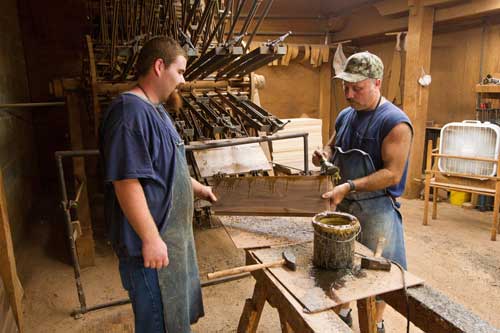MADISON, Va. - A 180-year-old company that prided itself on producing residential furniture built to last has announced it will close its doors within the year. Posted on E.A. Clore Sons' website, the company said, "It was a very difficult decision to make. Our family and craftsmen have worked for many decades, proud of the fine furniture they created."
Founded in 1830, Clore said it was once the eighth oldest family business in America. The solid hardwood, Early American furniture, has been manufactured using traditional methods for joinery and glues from animal hide.

Photo: E.A. Clore
"The machinery has changed, but the technique has not. We still put the same effort into the joinery and the techniques that were used to make furniture in the 1800," company president Tony Coppage said in an interview with NBC29.com. Clore, a descendent of the German immigrant family that founded the firm, said the company would take some orders as time and materials allow, but add a 20 percent surcharge to those orders and that it "will cease manufacturing our handcrafted furniture within the year. "

Photo: E.A. Clore
Located in historic Madison County in Virginia, E. A. Clore Sons, has produced its handcrafted furniture for more than 180 years, describing itself as "curators of Early American pieces with a contemporary approach; creating and selling simply beautiful furniture is our passion."
Belt-driven sanding
Using air-seasoned and kiln dried woods and hand-rubbed finishes, furniture pieces are built with exact mortise-and-tenon detailing and dovetailed drawers. "We remain dedicated to the methods of old world construction using new world precision," as the company describes it. "From our estimations, the vast majority of the furniture found in homes today is hastily crafted, a fact we do not take lightly. We believe sustainable, lasting purchases help make our community and world a better place to live. We also believe functional furniture should be an heirloom."
Using animal hide glue for joining parts.
 Photo: E.A. Clore
Photo: E.A. Clore








Have something to say? Share your thoughts with us in the comments below.